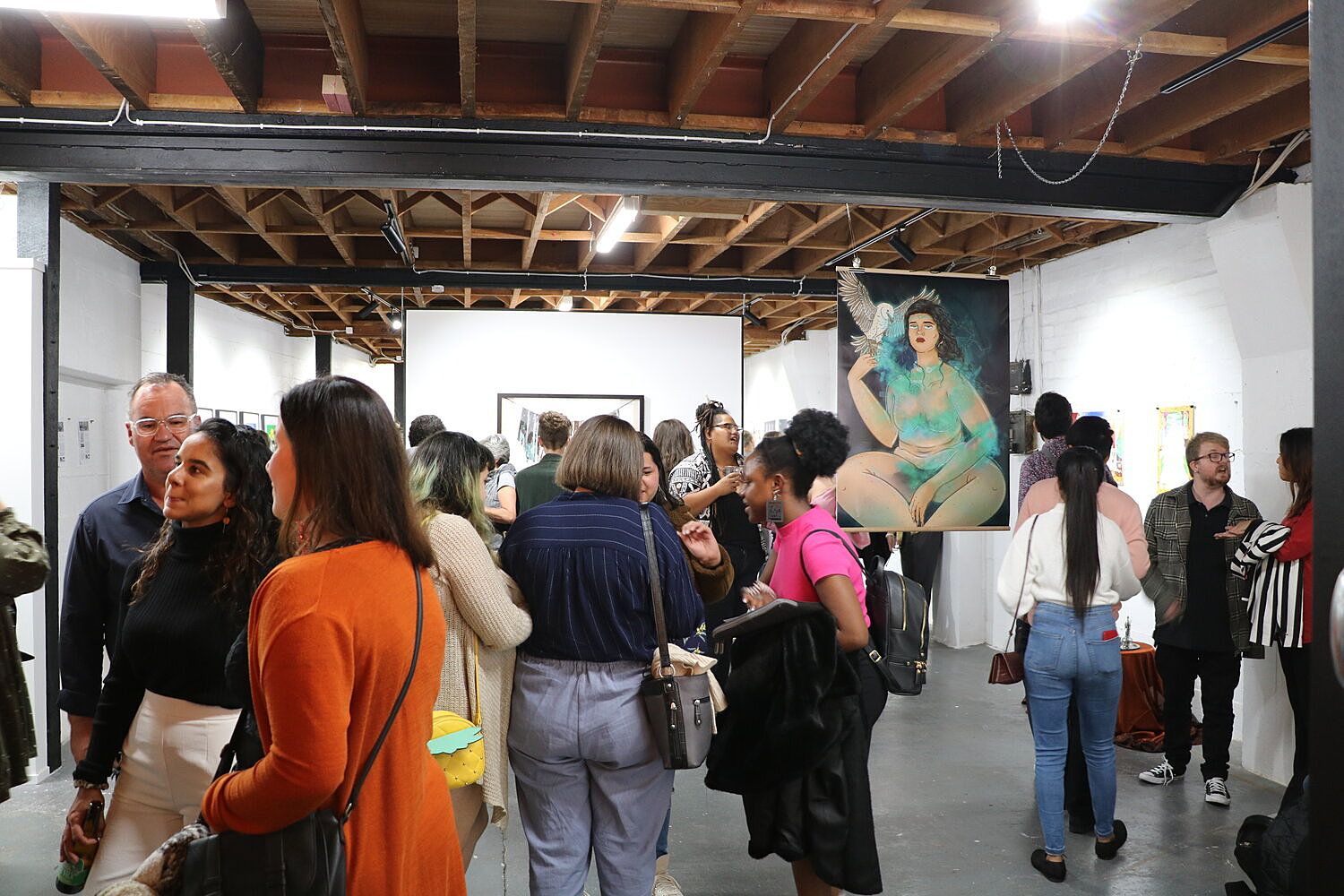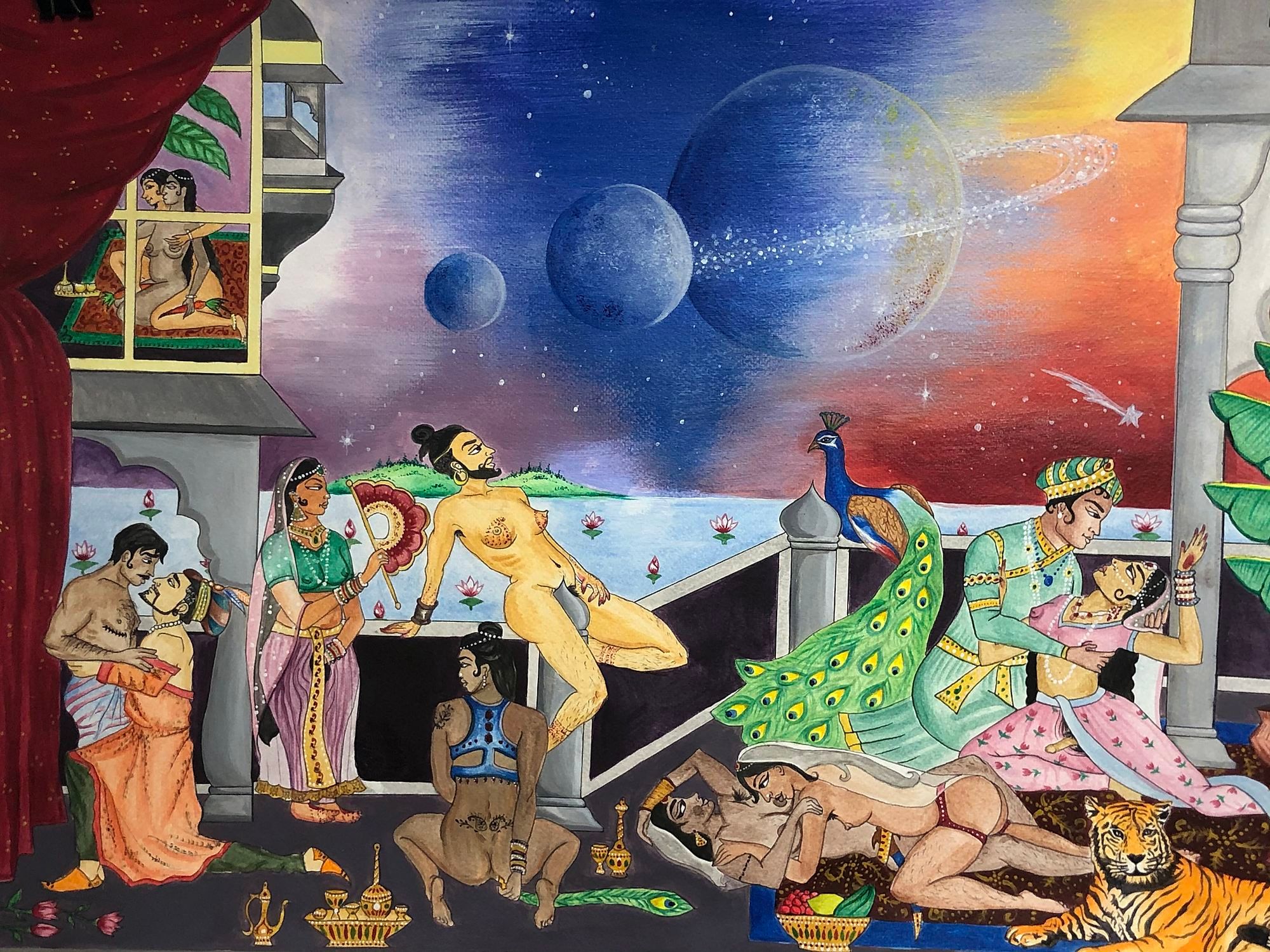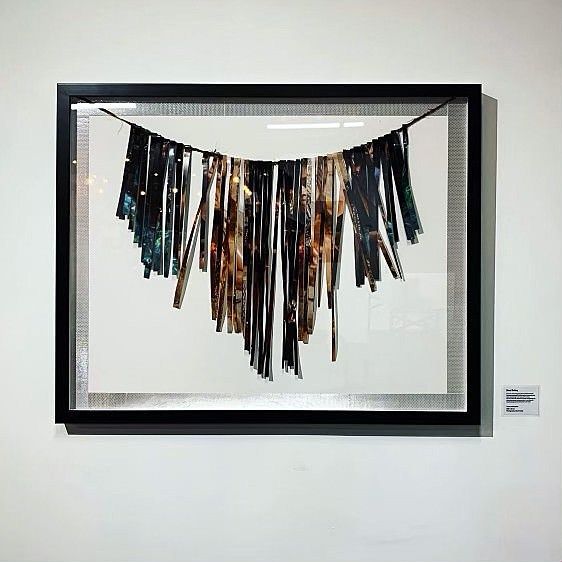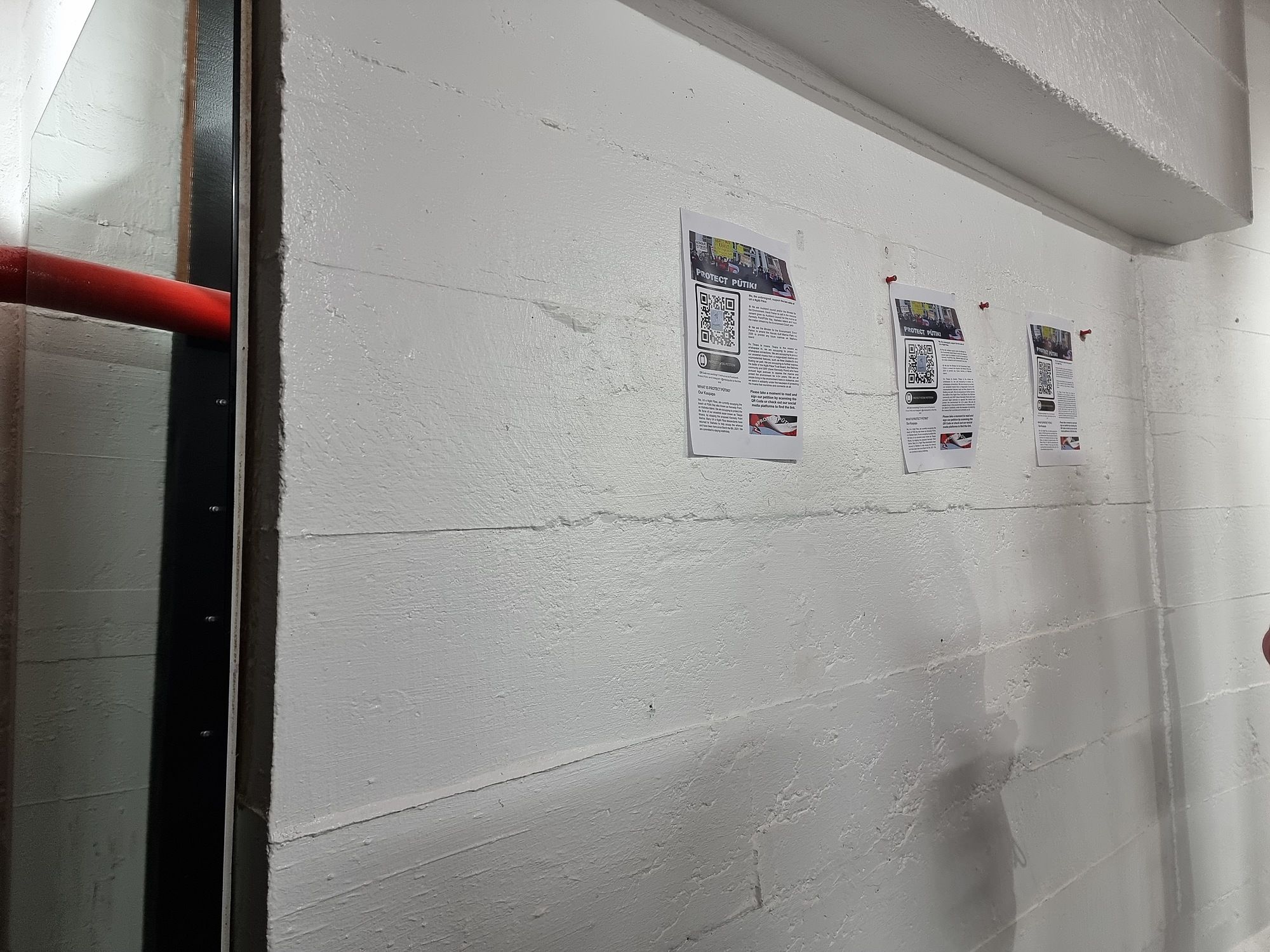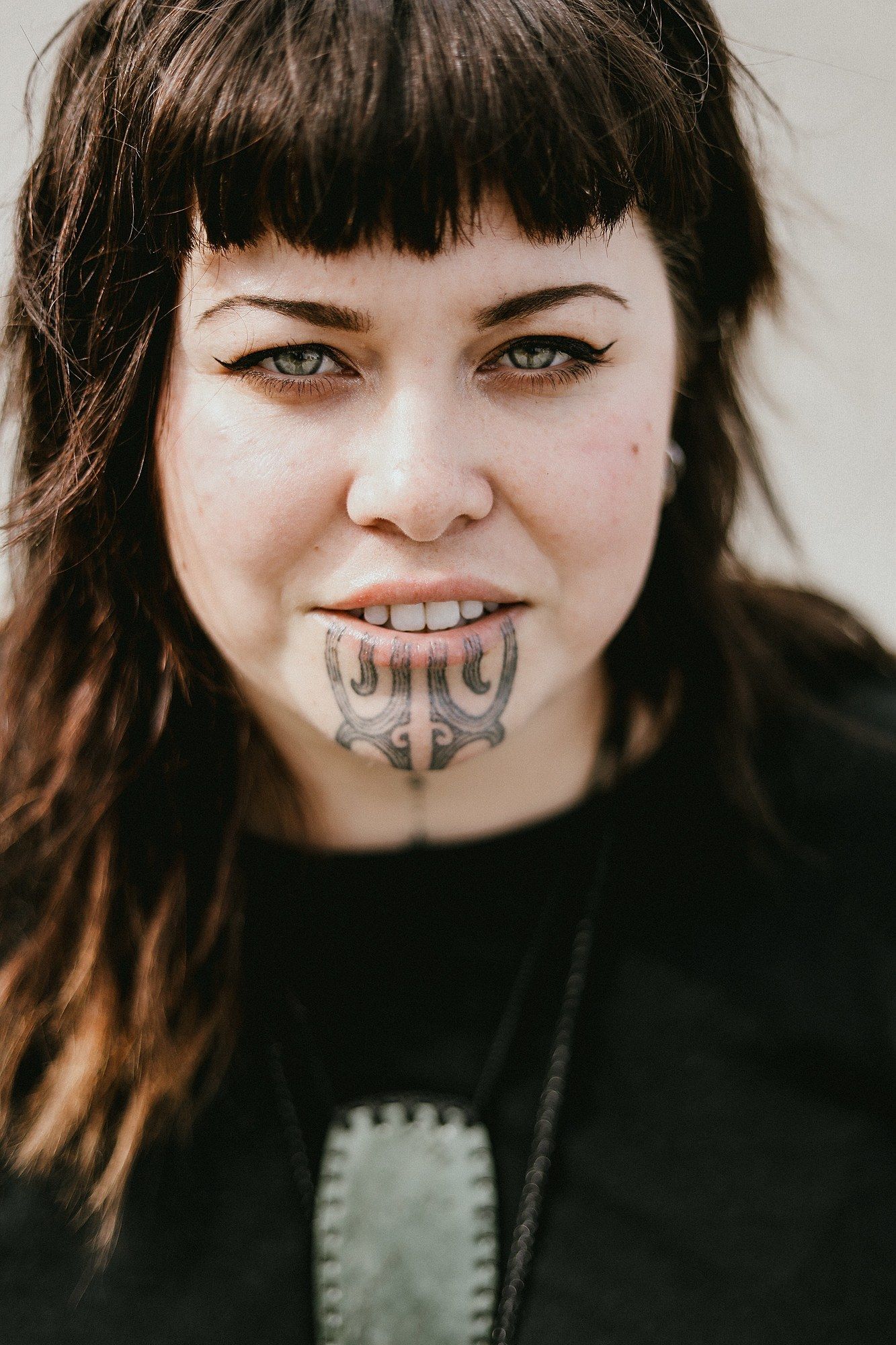A Similar Mauri, but a Different Āhua
The crowd at the opening event of Āhua Collective’s 2021 exhibition was gloriously queer and BBIPOC. Ana McAllister reviews.
Hot, sweaty and diverse. Those are the three words I’d use to describe the opening night of the exhibition Āhua, showing the work ofthe 2021 artists in the collective of the same name. The 100+ people squeezed tightly into the Mercury Plaza Gallery were all gorgeous, down to the table of kaumātua cracking up at each other's jokes whilst simultaneously keeping a watchful eye on the crowd. The crowd was gloriously queer and BBIPOC. This of course fits with the Āhua Collective’s kaupapa of empowering diverse creators and thinkers. A kaupapa born out of the minds of Sonya Milford (Founder, Design Director), Sherry Zhang (Editor, Writer), Pati Tyrell (Photographer, Creative Director) and Tallulah (Makeup Artist). These four powerhouses of creativity have managed to cultivate a space, both online and physical, that not only allows but encourages QTBBIPOC creatives to be themselves, and do it with their full puku.
The 2021 collective is made up of 12 artists: Hōhua Kurene, Sara Moana, Māhia Te Kore, Sam Bailey, Atarangi Anderson, Hazel Xu, Abbey Gamit, Kauri Waihoea, Sarita Das, Taylor Te Atarua, Tommie Love and Marc Conaco, all of whom identify as either Takatāpui, tauiwi QTBIPOC or MVPFAFF. The exhibition Āhua included abstract painting, photography, illustration, coding and VR technology, and protest.
I’d be finding new ornate and sexy details with every minute of examination, like the pair seen through a window using carrots as dildos
Atarangi Anderson’s paintings show a clear whakapapa to Ralph Hotere’s black paintings. A pair of paintings titled Te Kore are black and red textured planes, and include hand-written kupu like ‘wehe’, meaning separate, divide, or detach, and settler. Te Kore explores the endless potential of all things from which we all come. I could have happily sat with Te Kore for hours, getting lost in the depth of the black abyss.
This emptiness was juxtaposed with Sarita Das’s amazing, detailed painting, Shorgo স্বর্গ / Sci-fi Mughal Queer Sexcapade, which depicts, as Das describes it, a Shorgo/Mughal Queer sci-fi sexcapade. A really, really exquisite work that I could also have sat with for hours, but instead of staring into the abyss, I’d be finding new ornate and sexy details with every minute of examination, like the pair seen through a window using carrots as dildos, or the figure with their hand tucked suggestively underneath their skirt. The hyper-colourful work shows an orgy-like dreamscape where people from various gender intersections are enjoying the spoils of getting into this futuristic Queer, Indian heaven. The installation that accompanied this painting appeared to activate the work as an altar to Queer South Asian joy.
Sarita Das, Shorgo স্বর্গ / Sci-fi Mughal Queer Sexcapade, 2021
Another one of my absolute favourites was Sam Bailey. Sam is an amazing photographer, who for this exhibition presented Te Aho//Mokemoke, a work that combined sliced strips of his photographs in a maro (loin cloth). Which is a beautiful “reflection of the tensions between loss and life, of chaos and order, of tapu and noa, of old and new, of inspiration and solitude,” according to the artist. One of the original images I could recognise was a photograph titled Hine Te Iwaiwa, which depicts the atua ripping apart an orange kumara, her skin laden with oils, and pulling a pukana. This work was an interesting mixture of the ancestral connotations of a maro and the crisp modernity of digital photography.
Sam Bailey, Te Aho//Mokemoke, 2021
The creative team also invited the Ngāti Pāoa protectors, who have currently exhausted all legal efforts to stop the development of a 181-berth marina and are now occupying the whenua at a wāhi tapu at Kennedy Point on Waiheke Island. This mixture of art and protest was a perfect example of tino rangatiratanga. The interweaving of political protest and fine art showed mana motuhake in action. Because isn’t #LandBack the most beautiful painting? At one point during the rowdiness of the opening, the QR codes for the petition were hung on the walls of the gallery alongside the artworks. Though these artists all come from varied backgrounds, from tāngata whēnua to artists from immigrant whānau, they all share an understanding of the importance of their QTBBIPOC identity.
Protect Pōtiki posters, Ngāti Paoa protectors
This difference of background but similarity of experience showed itself in their artwork. Āhua felt like a patchwork quilt, where all the artists had created incredibly varied work, but all were discussing similar notions of self and belonging. All of the art had a similar mauri, but a very different āhua. This speaks to a diversity of voice, within diverse communities. Which is something that we are so rarely able to see, because we are simply not given the room to take up this much space.
Minority communities are too often marginalised within the ‘traditional art world’ – often referred to as the ‘white cube’, a reference to the gallery aesthetic characterised by cubic room shapes and white walls. As a takatāpui artist myself, I know too well how it feels to be approached to be in an exhibition where you are clearly the diversity pick. Not only are you a BBIPOC, but you're also LGBTQIA+ – meaning that your single identity can tick two of the necessary neoliberal boxes.
After experiences like that, it’s easy to get sick of the art world. Get sick of being tokenised and trying to squeeze yourself into the white cube. But work like Āhua gives me hope for the future of the art world. Though the physical Āhua exhibition is now closed, the Āhua collective will continue to produce content, including artist profiles, which will be released each month.
Header photography by Justin Wong
